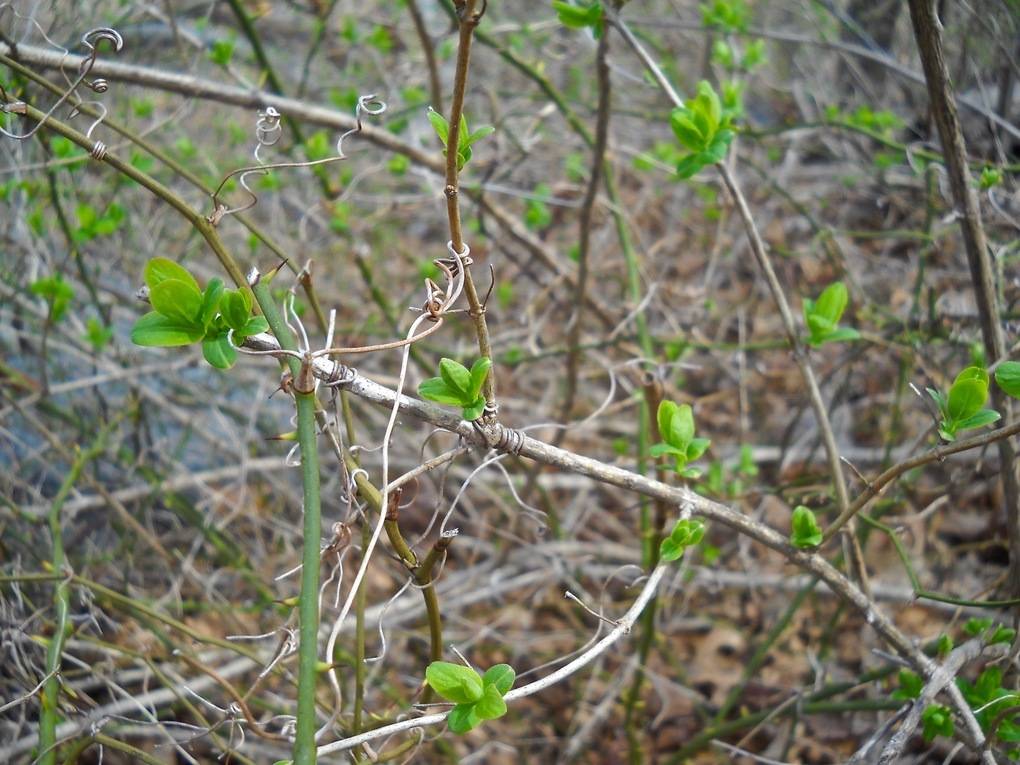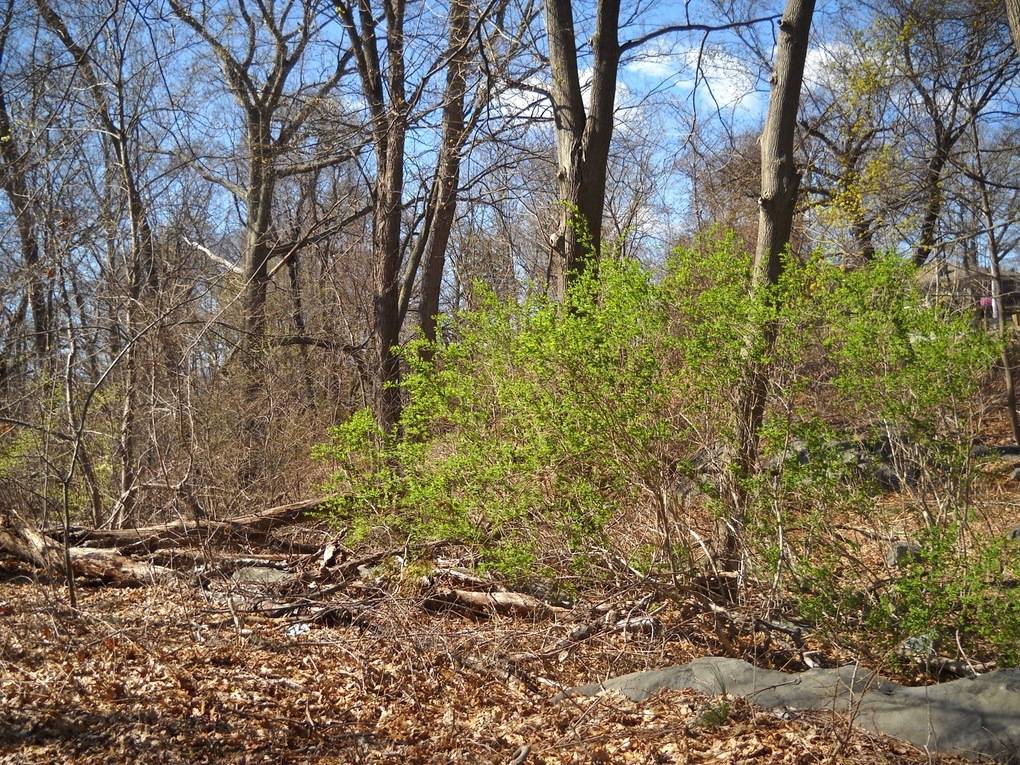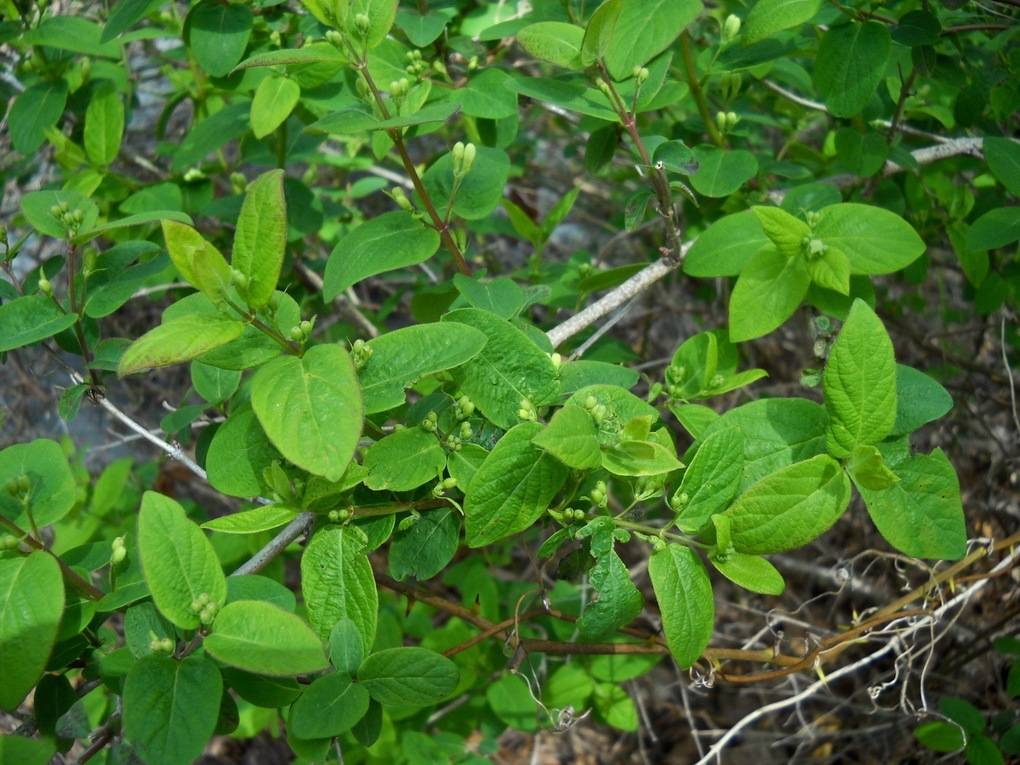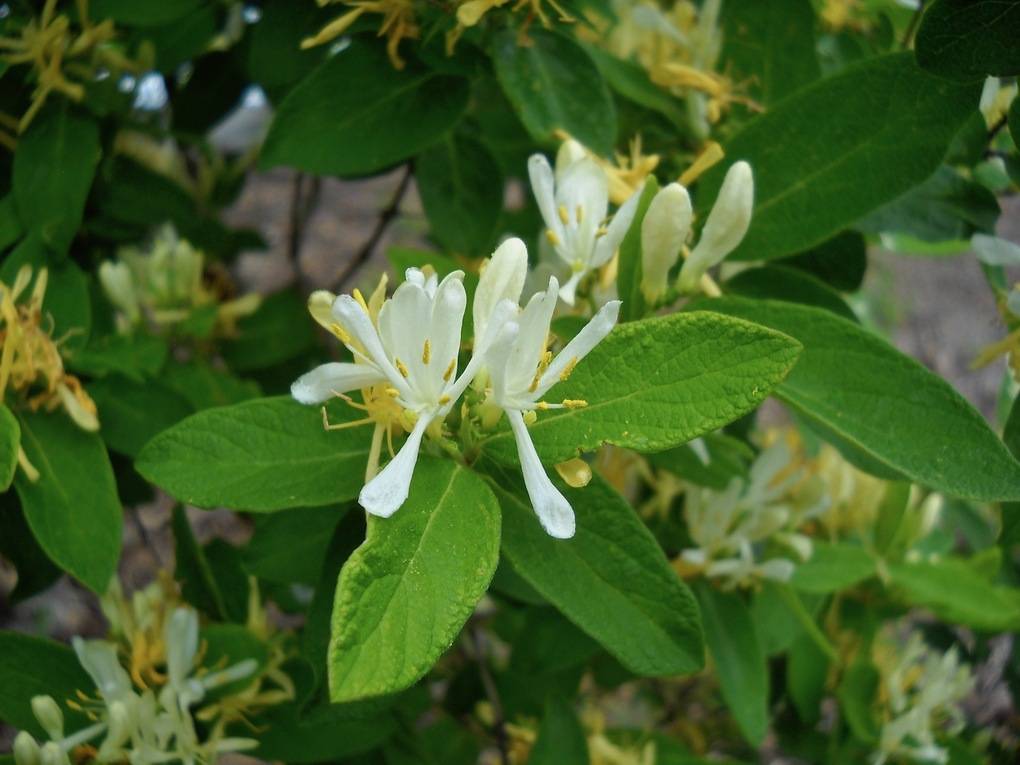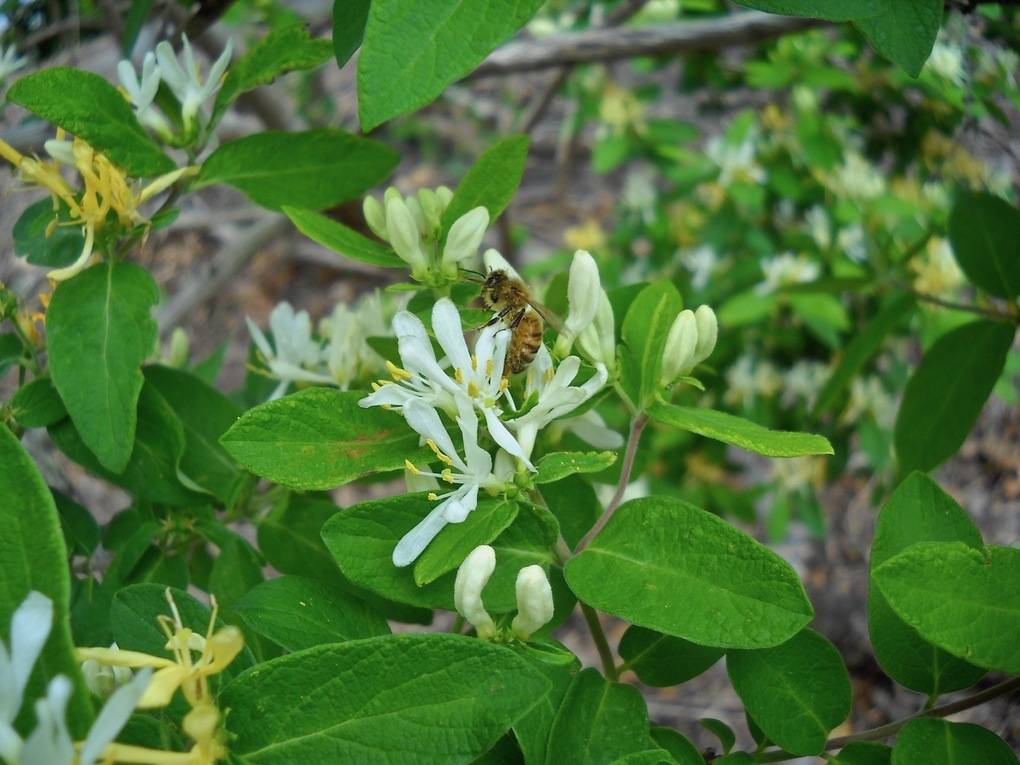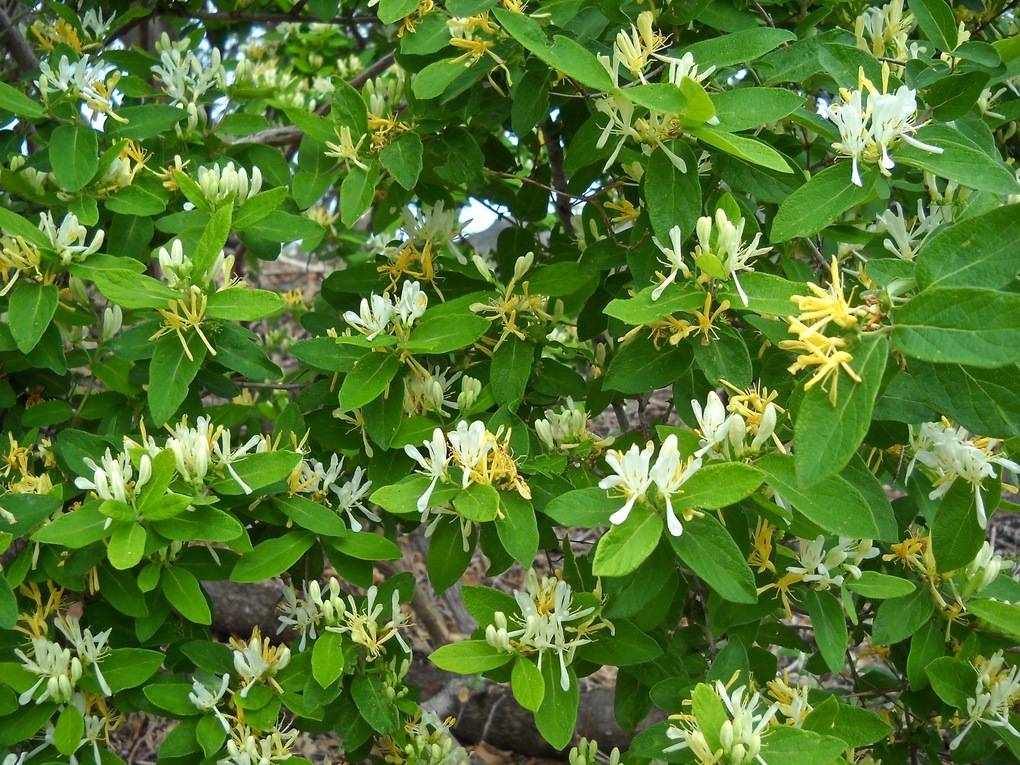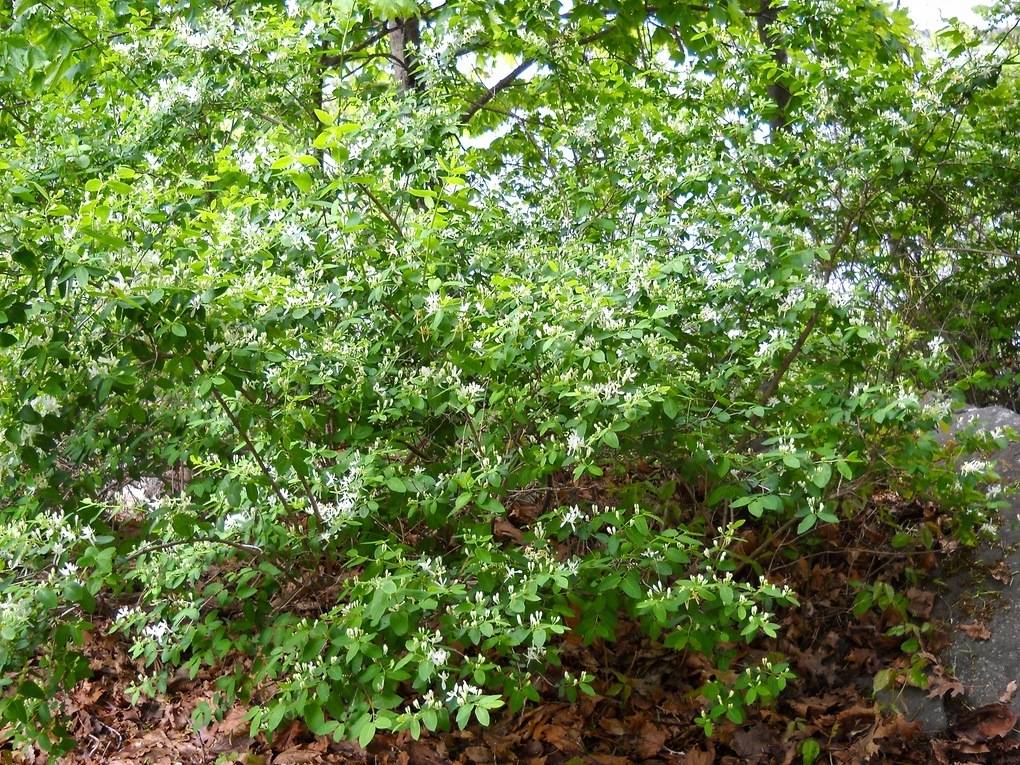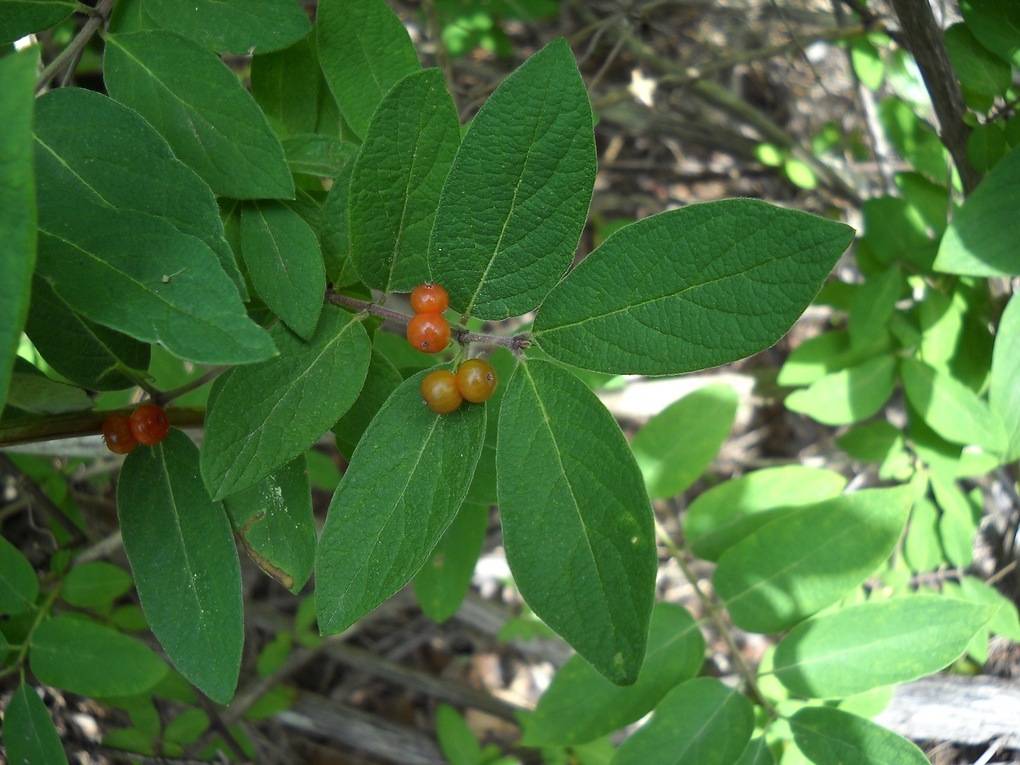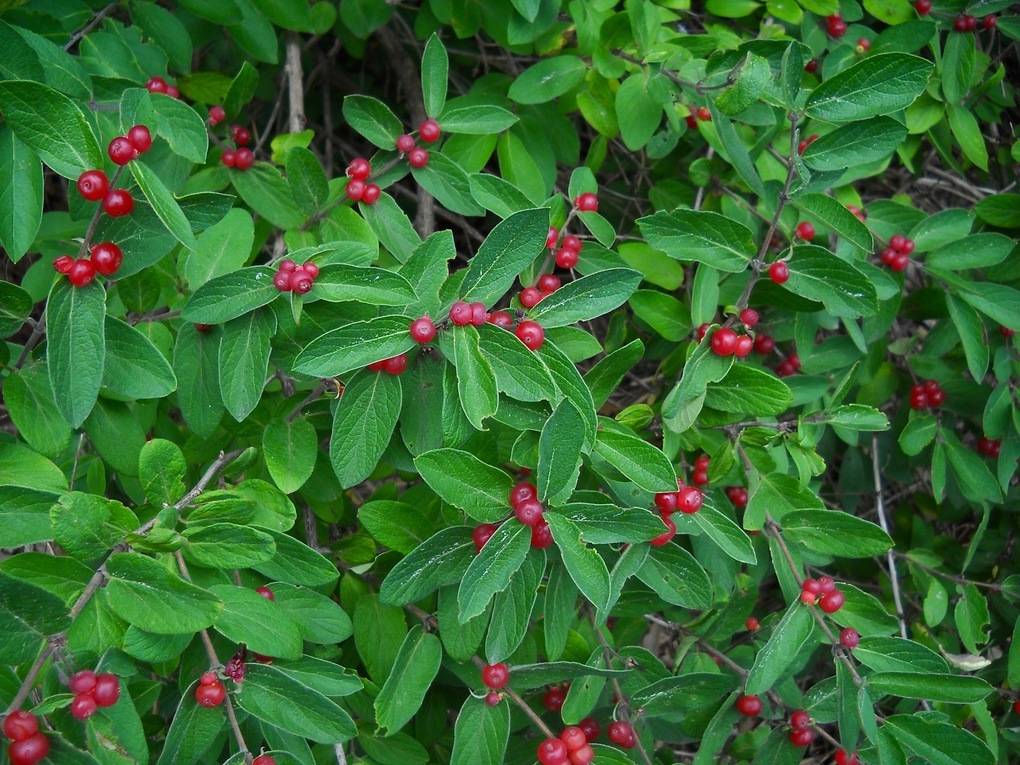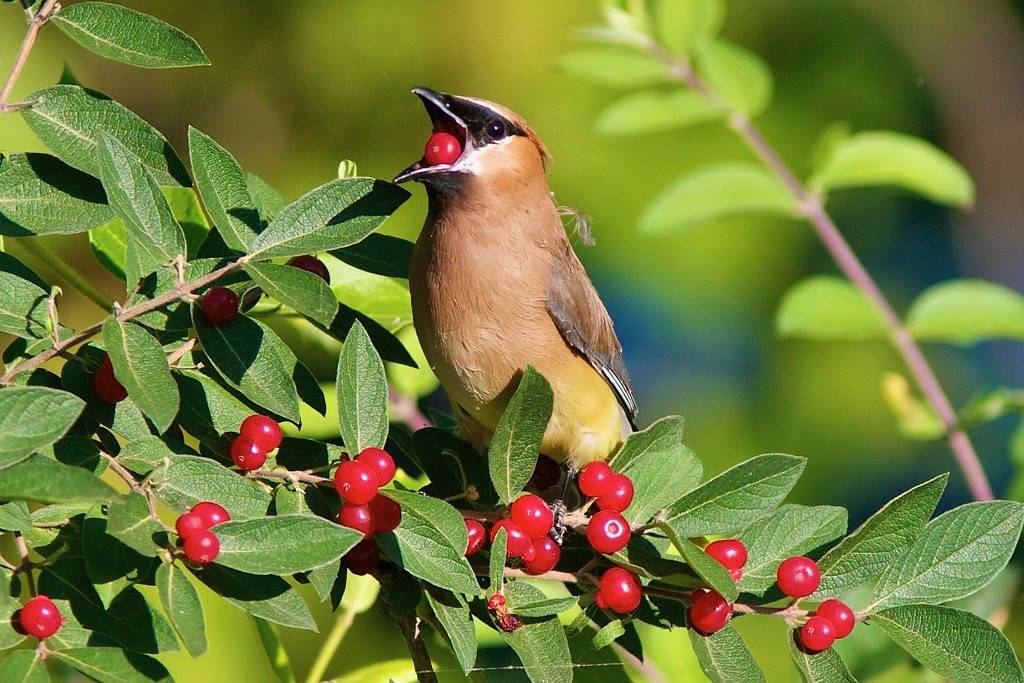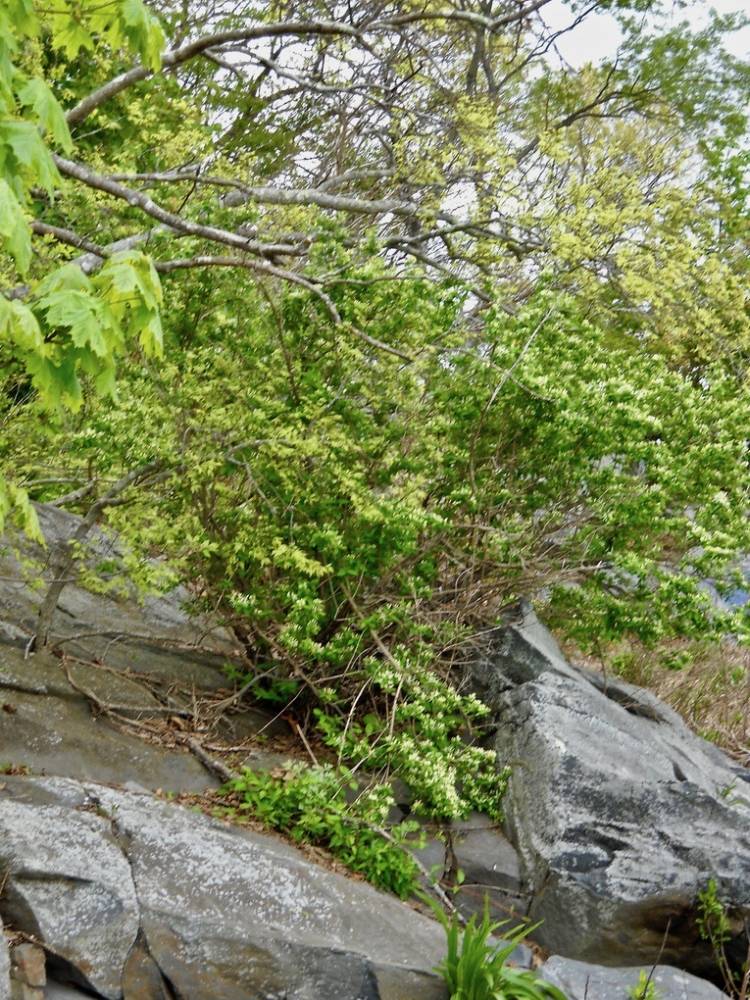Morrow's honeysuckle
Unlike the native climbing honeysuckles, Morrow's honeysuckle is a shrub. Native to northeastern China, Japan and Korea, it has adapted so well in some areas of temperate North America that it is considered to be an invasive species. It seems to grow best in disturbed woodland with young trees. Apart from shading out ground plants, it is thought that Morrow's honeysuckle has an allelopathic effect on other plants thus inhibiting the regeneration of native species in disturbed areas.
At Salter Grove, there are large individuals along the Upland and Marsh Trails but it has not become as abundant as some other introduced species such as Asian bittersweet or Norway maple. It is the first woody plant to leaf out in March, adding welcome greenery to a still wintry landscape.
The nectar produced by the flowers attracts insects that have long tubular tongues such as Sphinx moths and Swallowtail butterflies. Many bird species are attracted to its bright red fruits which results in a wide dispersal of seeds. Interestingly, a color change from red to orange in the wax spots of Cedar Waxwings within the last 35 years has been attributed to feeding on the fruits of Morrow's honeysuckle.

